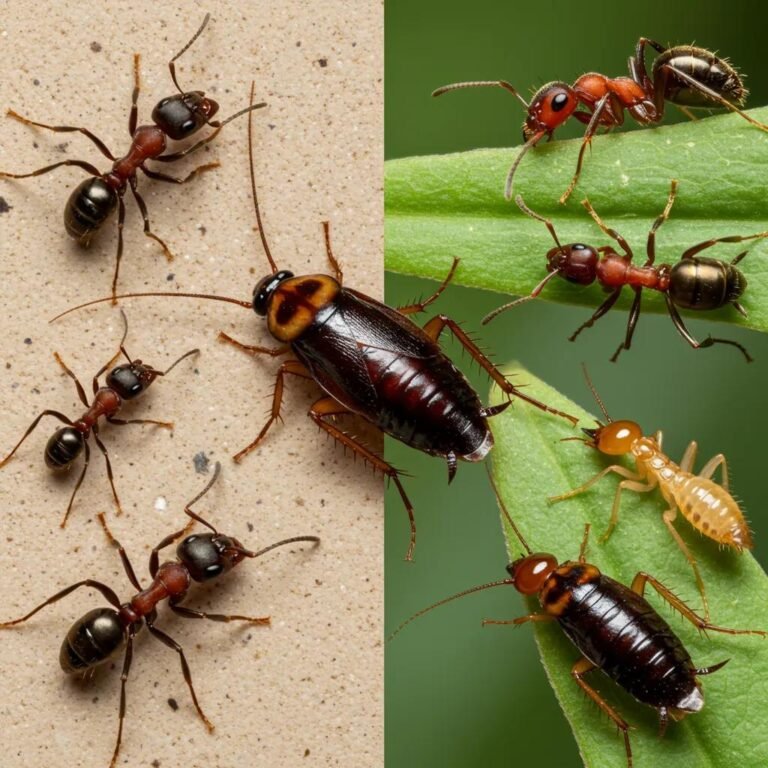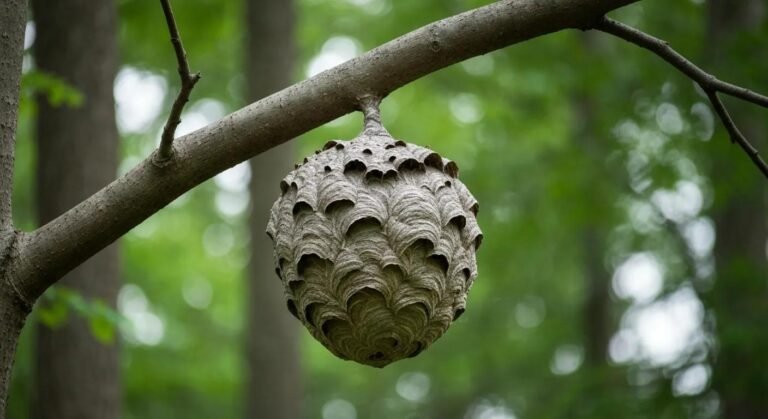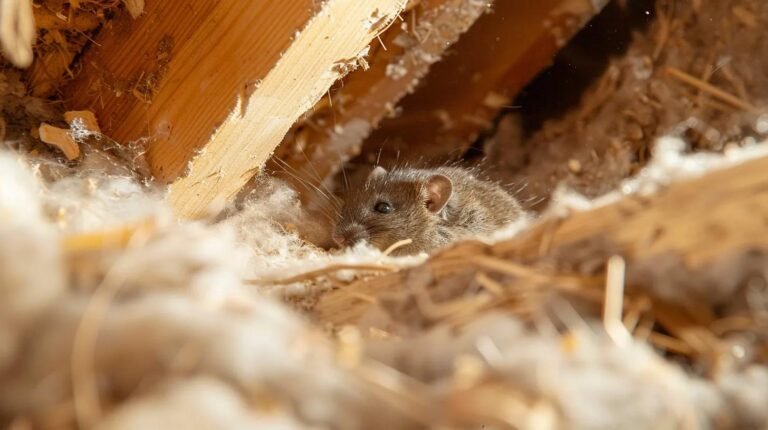As fall transitions into winter across South Florida, many homeowners focus on preparing their properties for cooler weather while overlooking one of the most insidious pest threats that can establish undetected during this season: bed bugs. These persistent parasites don’t follow traditional seasonal patterns like many other pests, but fall and early winter present unique circumstances that can lead to bed bug introductions and establishment in homes that have remained pest-free throughout the year.
Understanding when and how bed bugs enter homes, combined with systematic inspection techniques and early detection strategies, can prevent minor introductions from developing into major infestations that require extensive professional treatment. The cryptic nature of bed bug behavior means that early detection often represents the difference between simple elimination procedures and costly, disruptive treatment programs that can take months to complete successfully.
Fall’s increased travel activities, holiday shopping for second-hand items, college student transitions, and the onset of heating season create multiple opportunities for bed bug introduction while providing ideal conditions for rapid population establishment. Professional bed bug extermination becomes significantly more complex and expensive once infestations become established, making prevention and early detection critical components of effective bed bug management.
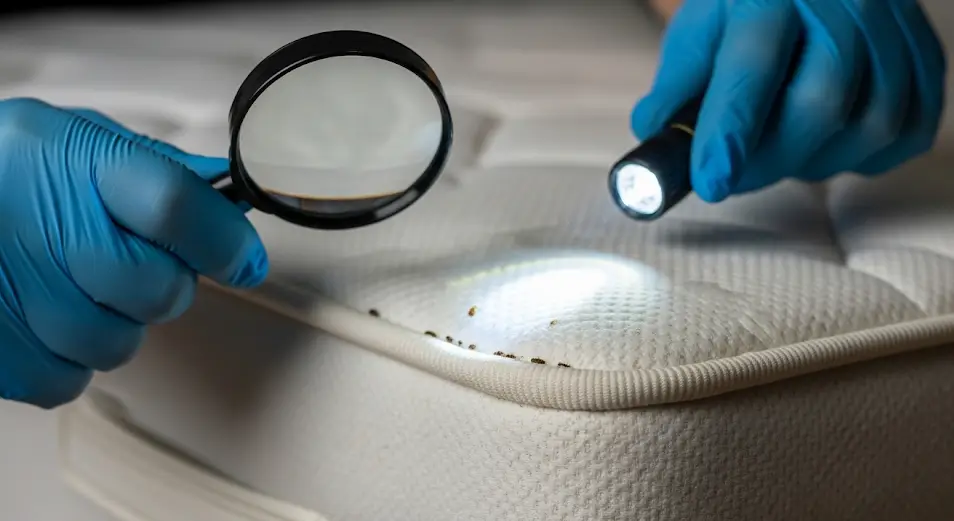
Understanding Fall Bed Bug Activity Patterns
Bed bug behavior doesn’t follow the same seasonal patterns as outdoor pests, but fall conditions create specific circumstances that increase the likelihood of introduction and establishment in previously unaffected homes. These blood-feeding parasites remain active year-round in climate-controlled environments, but their introduction patterns correlate strongly with human activities that peak during fall months.
Travel-Related Introductions
Fall represents peak travel season for many families as summer vacations transition into holiday travel, business conferences, and family gatherings. Each travel event presents opportunities for bed bug introduction through contaminated luggage, clothing, and personal items that can harbor these persistent hitchhikers.
Hotels and accommodations experience some of their highest occupancy rates during fall months, increasing the likelihood of bed bug establishment in previously clean facilities while elevating the risk for travelers who might encounter infested rooms. Even luxury accommodations can harbor bed bugs, as these pests don’t discriminate based on cleanliness or price point.
Airport terminals, transportation hubs, and travel facilities can serve as bed bug distribution points where infested luggage and personal items come into contact with clean materials. The high volume of travelers during fall months increases these cross-contamination opportunities while creating ideal conditions for bed bug dispersal to new locations.
Second-Hand Acquisition Risks
Fall shopping seasons, including back-to-school purchases and early holiday shopping, drive increased activity in second-hand markets where bed bug risks are significantly elevated. Thrift stores, consignment shops, online marketplaces, and garage sales all present opportunities for acquiring bed bug-infested items unknowingly.
Furniture purchases represent the highest risk category for bed bug introduction, with upholstered items, mattresses, and wooden furniture with cracks or crevices providing ideal harborage areas for established populations. Even items that appear clean and well-maintained can harbor bed bugs in hidden locations where casual inspection won’t reveal their presence.
Electronics, books, picture frames, and other seemingly unlikely items can also harbor bed bugs, particularly when acquired from infested environments. The broad range of items that can serve as bed bug transportation makes comprehensive inspection protocols essential for anyone acquiring second-hand goods during fall shopping seasons.
Student Housing Transitions
College dormitories and student housing facilities experience major population turnover during fall move-in periods, creating ideal conditions for bed bug introduction and rapid dispersal among student populations. The combination of high-density living, frequent travel, and shared spaces amplifies bed bug risks significantly.
Students returning home for breaks can inadvertently introduce bed bugs from infested dormitories or off-campus housing, particularly when proper inspection and prevention protocols aren’t followed. Contaminated clothing, luggage, and personal items can establish infestations in family homes that persist long after students return to school.
The social nature of student activities and the frequent movement of personal items between different housing situations create multiple opportunities for bed bug dispersal within student populations while increasing risks for family homes that host visiting students.
Comprehensive Home Inspection Protocol
Effective bed bug detection requires systematic inspection techniques that address the cryptic nature of these pests while accounting for their tendency to remain hidden in areas where they’re unlikely to be disturbed. Professional-grade inspection protocols provide the thoroughness necessary for reliable detection while ensuring that potential infestations are identified before they become established.
Bedroom Inspection Procedures
Bedroom areas require the most thorough inspection attention as bed bugs typically establish populations near their preferred feeding sites where humans spend extended periods in a stationary position. Begin inspection procedures by stripping all bedding materials and examining each item carefully for the telltale signs of bed bug activity.
Mattress inspection should focus on seams, labels, and head-of-bed areas where bed bugs commonly establish harborage sites. Use a flashlight and magnifying glass to examine these areas carefully, looking for live bugs, dark stains from bed bug excrement, reddish stains from crushed bed bugs, and small dark spots that may represent bed bug fecal deposits.
Box spring examination requires particular attention to the underside fabric covering and corner areas where staples and fabric folds create ideal hiding places. Remove the fabric covering if possible to inspect internal areas, or use a flashlight to examine visible areas thoroughly for signs of bed bug activity.
Bed frame inspection should include all joints, screw holes, cracks, and crevices where bed bugs might establish harborage sites. Metal frames require attention to hollow areas and connection points, while wooden frames need examination of natural cracks and manufactured joints where bed bugs commonly hide.
Nightstand and furniture inspection around sleeping areas should include drawer joints, back panels, and any areas where furniture meets walls. Upholstered furniture requires careful examination of seams, cushion areas, and frame construction where bed bugs might establish secondary harborage sites.
Living Area Assessment
While bedrooms represent primary bed bug habitat, these pests can establish populations throughout homes, particularly in areas where people spend extended periods sitting or resting. Living room furniture, particularly upholstered seating, requires careful inspection using similar techniques to bedroom furniture examination.
Couch and chair inspection should focus on seams, cushion areas, and frame construction while paying special attention to areas where fabric meets frame construction. Remove cushions and examine both the furniture frame and cushion construction for signs of bed bug activity.
Electronics and entertainment equipment can provide harborage areas for bed bugs, particularly items with ventilation slots, connection ports, or areas where heat generation creates attractive microenvironments. Picture frames, decorative items, and wall-mounted fixtures also require inspection, especially those located near seating areas.
Carpet edges and baseboards throughout living areas should be examined carefully, particularly in areas where flooring meets walls or where carpet installation creates gaps that bed bugs might exploit for harborage. Use a flashlight to examine these areas thoroughly while looking for the characteristic signs of bed bug activity.
Secondary Areas and Risk Zones
Guest bedrooms and spare rooms can harbor bed bugs even when infrequently used, particularly if infested items have been stored in these areas or if previous guests introduced bed bugs unknowingly. These areas require the same thorough inspection protocols as primary bedrooms while paying special attention to stored items and seldom-disturbed areas.
Closets and storage areas need examination, particularly where clothing, luggage, and personal items are stored long-term. Bed bugs can survive extended periods without feeding, making storage areas potential reservoir sites where populations can persist undetected for months.
Laundry areas require inspection, especially where dirty clothing might be stored before washing or where clean laundry might be folded and stored. Bed bugs can survive washing in cool water but are eliminated by high heat drying cycles, making laundry procedures important components of bed bug prevention strategies.
Identifying Bed Bug Evidence
Successful bed bug detection relies on recognizing the various types of evidence these cryptic pests leave behind, as adult bed bugs spend most of their time hidden in harborage areas where direct observation is unlikely. Understanding the different categories of bed bug evidence and their significance allows for accurate assessment of infestation potential while avoiding false positives from other pest species or household conditions.
Visual Identification of Live Bugs
Adult bed bugs measure approximately 4-5 millimeters in length with oval, flattened bodies that appear mahogany to rust-colored when unfed and become more elongated and darker when engorged with blood. Their wingless bodies and distinct antennae distinguish them from other small household pests, while their behavior patterns provide additional identification clues.
Bed bug nymphs appear smaller and lighter colored than adults, progressing through five developmental stages before reaching maturity. Young nymphs can be nearly translucent and extremely difficult to detect without magnification, while older nymphs become progressively darker and easier to identify.
Live bed bug identification requires understanding their movement patterns and behavior characteristics. Bed bugs move relatively slowly and deliberately compared to other small insects, and they tend to seek cover when disturbed rather than flying or jumping away from threats.
Proper lighting and magnification equipment facilitate accurate bed bug identification while reducing the likelihood of misidentification that can lead to unnecessary alarm or inappropriate treatment decisions. Professional pest identification services provide definitive species confirmation when visual identification proves challenging.
Staining and Excrement Evidence
Bed bug fecal deposits appear as small, dark spots that may smear when moistened, typically appearing along mattress seams, in furniture joints, and in other areas where bed bugs commonly rest between feeding activities. These deposits accumulate over time and can indicate both current activity levels and historical infestation duration.
Blood stains on sheets, mattresses, and nearby surfaces may result from crushed bed bugs that were engorged with blood or from feeding site bleeding after bed bugs detach from hosts. These stains typically appear as small, rust-colored spots that may smear or fade over time but provide important evidence of feeding activity.
Excrement stains can be distinguished from other household stains through their location patterns, size consistency, and response to moisture testing. Professional inspection services can provide definitive identification of suspicious stains while ruling out other potential sources of similar-appearing marks.
Shed Skins and Molting Evidence
Bed bugs shed their exoskeletons five times during development from egg to adult, leaving behind translucent, hollow skin casings that provide definitive evidence of bed bug presence and development. These shed skins typically appear in harborage areas where bed bugs spend extended periods between feeding activities.
Molting evidence indicates active reproduction and population development, suggesting established infestations rather than recent introductions. The quantity and distribution of shed skins can provide insights into infestation duration and population size while guiding treatment strategy development.
Shed skin identification requires careful examination as these translucent casings can be easily overlooked or mistaken for other debris. Professional inspection services have the experience and equipment necessary for reliable identification while distinguishing bed bug evidence from similar-appearing materials.
Distinctive Odor Detection
Established bed bug infestations often produce characteristic sweet, musty odors that result from bed bug pheromone production and the accumulation of waste products in harborage areas. These odors become more pronounced as infestations grow larger and more established over time.
Odor detection provides supplementary evidence for bed bug presence but should not be relied upon as a primary detection method, as many people cannot detect bed bug odors reliably, and other household conditions can produce similar smells. Professional inspection combines odor assessment with visual evidence for comprehensive evaluation.
The intensity and distribution of bed bug odors can provide insights into infestation locations and severity while helping guide inspection focus areas. However, odor-based detection requires experience and should be combined with other evidence types for reliable assessment.
Travel-Related Prevention Strategies
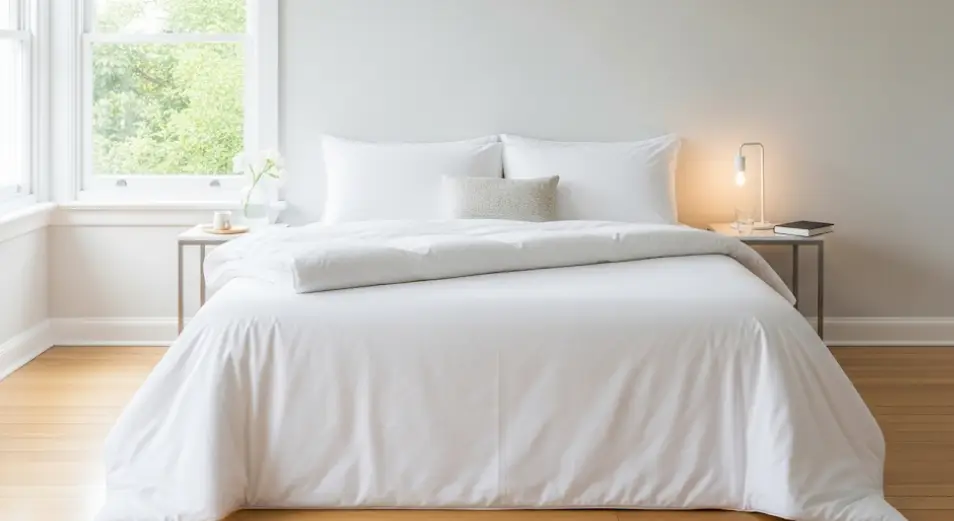
Fall travel seasons require proactive bed bug prevention strategies that address the elevated risks associated with accommodations, transportation, and luggage handling during peak travel periods. Understanding where bed bugs are most commonly encountered during travel allows for targeted prevention efforts that significantly reduce introduction risks.
Hotel and Accommodation Inspection
Upon arrival at any accommodation, conduct immediate inspection of sleeping areas before unpacking luggage or settling into rooms. Focus inspection efforts on mattress seams, headboard areas, and upholstered furniture while using flashlights or smartphone lights to examine potential harborage areas thoroughly.
Pull back bedding and examine mattress seams systematically, paying special attention to the head-of-bed area where bed bugs typically establish primary harborage sites. Look for the characteristic signs of bed bug activity including live bugs, fecal stains, blood spots, and shed skins that indicate current or recent infestation.
Request room changes immediately if any evidence of bed bug activity is discovered, and ensure that replacement rooms are not adjacent to potentially infested areas where bed bugs might spread through wall voids or shared furniture. Document any bed bug evidence with photographs for potential compensation claims or to assist accommodation management with remediation efforts.
Luggage Protection Protocols
Store luggage in bathrooms or other hard-surface areas away from beds and upholstered furniture during accommodation inspections and throughout stays to minimize bed bug exposure risks. Bathroom areas typically provide the lowest bed bug risk environments due to their hard surfaces and lack of suitable harborage areas.
Use hard-shell luggage when possible, as bed bugs find it more difficult to establish harborage areas in smooth plastic or metal surfaces compared to fabric luggage that provides textile fibers and seams where bed bugs can hide effectively. Inspect luggage regularly during travel for any signs of bed bug introduction.
Consider packing clothing in sealed plastic bags within luggage to create additional barriers against bed bug introduction while facilitating easier inspection and cleaning procedures if exposure occurs during travel. This approach also prevents bed bug establishment within luggage even if external contamination occurs.
Post-Travel Inspection and Cleaning
Immediately upon returning home, inspect all luggage, clothing, and travel items outside the main living areas to prevent bed bug introduction into clean environments. Garage areas, covered patios, or other areas separate from bedrooms provide suitable locations for thorough post-travel inspections.
Launder all clothing and washable items in hot water followed by high-heat drying cycles that eliminate any bed bugs or eggs that might have been acquired during travel. Items that cannot be washed should be placed in high-heat dryers for 30-45 minutes to ensure elimination of any potential bed bug contamination.
Store luggage in sealed plastic bags or containers after cleaning until next use to prevent any undetected bed bugs from establishing populations in storage areas where they might persist until future travel activities provide opportunities for dispersal.
Second-Hand Item Inspection Guidelines
The acquisition of second-hand items represents one of the highest risk activities for bed bug introduction, requiring comprehensive inspection protocols that address the diverse range of items that can harbor these persistent pests. Understanding which items present the greatest risks and implementing appropriate inspection procedures can prevent costly infestations while allowing safe acquisition of used goods.
High-Risk Item Categories
Upholstered furniture represents the highest risk category for bed bug acquisition, with couches, chairs, mattresses, and other fabric-covered items providing ideal harborage areas for established bed bug populations. These items require the most thorough inspection procedures while presenting the greatest challenges for effective bed bug detection.
Wooden furniture with cracks, joints, or crevices can harbor bed bugs even when appearing clean and well-maintained. Dressers, nightstands, desks, and other wooden items need careful inspection of construction joints, drawer slides, and any areas where wood components meet or where damage has created additional hiding places.
Electronics and appliances can harbor bed bugs, particularly items with ventilation slots, connection ports, or internal spaces where bed bugs can establish harborage areas. Televisions, computers, small appliances, and similar items require careful inspection while considering that bed bugs can access internal areas that aren’t readily visible.
Inspection Techniques for Different Materials
Fabric item inspection requires systematic examination of seams, cushion areas, and any areas where multiple fabric layers meet or where fabric attaches to frame construction. Use flashlights and magnifying glasses to examine these areas thoroughly while looking for live bugs, staining, shed skins, and other evidence of bed bug activity.
Wood inspection should include examination of natural cracks, construction joints, screw holes, and any areas where damage has created additional crevices. Pay special attention to areas where different wood pieces join and where hardware attachments create gaps that bed bugs might exploit for harborage.
Metal and plastic items require attention to connection points, ventilation areas, and any locations where multiple components join to create potential harborage areas. While these materials are less attractive to bed bugs than fabric or wood, established populations can exploit even minimal harborage opportunities.
Safe Acquisition and Treatment Procedures
Consider heat treatment options for newly acquired items before bringing them into main living areas, particularly for items where thorough inspection is challenging or where bed bug risks are elevated. Professional heat treatment services can eliminate bed bugs from acquired items while preserving item integrity.
Quarantine procedures for newly acquired items involve storing them in sealed containers or separate areas for several weeks while monitoring for signs of bed bug emergence. This approach allows time for any undetected bed bugs to become active and detectable while preventing establishment in main living areas.
Professional inspection services can provide expert evaluation of high-value or high-risk items when acquisition decisions involve significant investments or when personal inspection capabilities are insufficient for reliable assessment. These services provide definitive evaluation while reducing risks associated with valuable acquisitions.
Professional Inspection vs DIY Detection
Understanding the limitations of personal inspection efforts versus the capabilities of professional bed bug detection services helps homeowners make appropriate decisions about when professional intervention becomes necessary for reliable assessment. The cryptic nature of bed bug behavior and the serious consequences of missed infestations make professional services valuable for many situations.
Limitations of Personal Inspection
Visual inspection limitations include the difficulty of accessing all potential harborage areas within furniture construction, wall voids, and other locations where bed bugs commonly establish populations. Many bed bug harborage sites remain inaccessible without disassembly or specialized equipment that most homeowners don’t possess.
Experience factors significantly impact inspection effectiveness, as bed bug evidence can be subtle and easily confused with other household conditions or pest species. Professional inspectors have extensive experience with bed bug behavior patterns and evidence interpretation that improves detection reliability significantly.
Equipment limitations in personal inspections include inadequate lighting, insufficient magnification, and lack of specialized tools that professional services use for comprehensive bed bug detection. These equipment differences can mean the difference between successful detection and missed infestations that continue to develop.
Professional Detection Advantages
Canine detection services provide capabilities that exceed human inspection abilities through trained dogs that can detect bed bug pheromones and identify infestations in locations that visual inspection cannot access reliably. These services provide rapid assessment of large areas while identifying specific infestation locations with high accuracy.
Professional experience with bed bug behavior patterns allows for targeted inspection strategies that focus efforts on the most likely harborage areas while ensuring comprehensive coverage of potential infestation sites. This experience-based approach improves detection efficiency while reducing the likelihood of missed infestations.
Specialized equipment used by professional services includes high-powered flashlights, magnifying equipment, detection devices, and other tools that improve inspection thoroughness while providing capabilities that personal inspection efforts cannot match effectively.
Cost-Benefit Analysis
Early detection benefits through professional inspection can prevent minor infestations from developing into major problems that require extensive treatment programs costing thousands of dollars while causing months of disruption. The cost of professional inspection represents a small fraction of the potential treatment costs for established infestations.
Peace of mind provided by professional confirmation of bed bug absence or presence allows homeowners to make informed decisions about treatment needs while eliminating uncertainty that can cause ongoing anxiety and disruption. Professional services provide definitive answers that guide appropriate response strategies.
Treatment strategy development through professional assessment ensures that any necessary treatment efforts address the specific conditions and infestation characteristics present while avoiding unnecessary treatments or approaches that might be ineffective for particular situations.
When to Seek Professional Treatment
Understanding the circumstances that require professional bed bug treatment helps homeowners respond appropriately to detected infestations while avoiding unnecessary delays that can allow populations to expand and become more difficult to eliminate. The complexity of effective bed bug treatment makes professional intervention necessary for most established infestations.
Infestation Indicators
Multiple evidence types discovered during inspection typically indicate established infestations that exceed DIY treatment capabilities while requiring comprehensive professional approaches for effective elimination. The presence of live bugs, extensive staining, numerous shed skins, and characteristic odors suggests population levels that require professional-grade treatment strategies.
Widespread distribution of bed bug evidence throughout multiple rooms or areas indicates advanced infestations that have had time to establish and spread beyond initial introduction points. These situations require comprehensive treatment approaches that address all affected areas while preventing re-infestation from untreated locations.
Recurring activity after attempted DIY treatments suggests resistant populations or treatment approaches that haven’t addressed all harborage areas effectively. Professional services can assess treatment failures while implementing more comprehensive strategies that eliminate persistent populations.
Health and Safety Considerations
Allergic reactions to bed bug bites affect some individuals more severely than others and may require medical attention while making continued exposure inadvisable. Professional treatment becomes necessary when health impacts exceed acceptable levels or when medical complications develop from bed bug exposure.
Sleep disruption and psychological impacts from bed bug infestations can significantly affect quality of life while creating stress-related health problems that justify professional intervention. The peace of mind provided by professional treatment often outweighs cost considerations when personal well-being is affected.
Treatment Complexity Requirements
Integrated pest management approaches required for effective bed bug elimination typically exceed DIY capabilities while requiring specialized equipment, materials, and expertise that professional services provide. The complexity of modern bed bug populations often requires multiple treatment methods used in coordination for optimal results.
Why bed bugs are becoming more common in Florida rental properties creates additional challenges that require professional expertise for effective resolution while addressing liability and tenant relations concerns that property owners must navigate carefully.
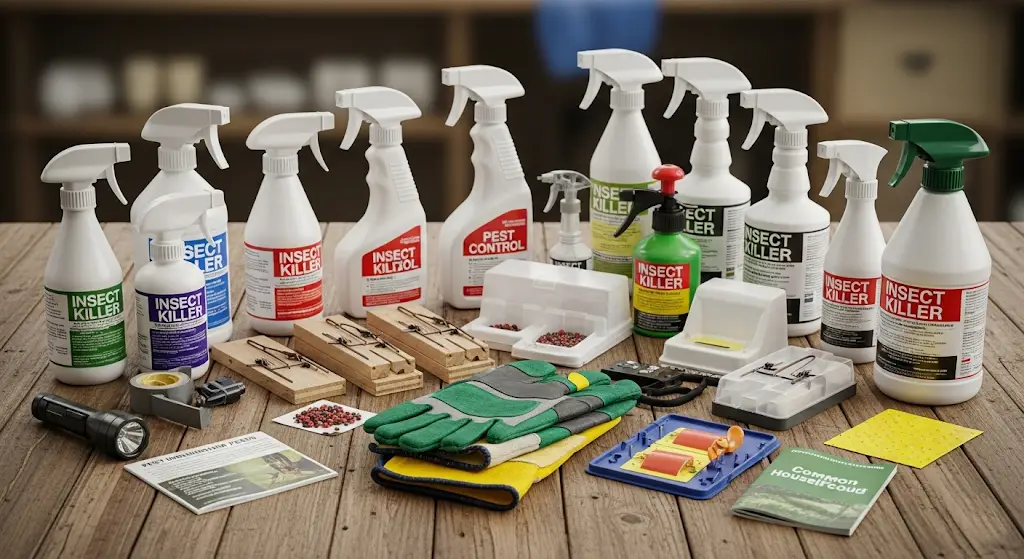
Conclusion
Fall bed bug prevention and early detection represent critical components of comprehensive home protection that require proactive attention before infestations become established and costly to eliminate. The unique circumstances that elevate bed bug introduction risks during fall months make this season particularly important for implementing systematic inspection protocols while maintaining vigilance against these persistent parasites.
The cryptic nature of bed bug behavior and their ability to remain undetected for extended periods make early detection efforts particularly valuable for preventing minor introductions from developing into major infestations. Professional bed bug extermination services provide the expertise and resources necessary for effective treatment when infestations are discovered, but prevention and early detection remain the most cost-effective approaches for bed bug management.
Understanding the relationship between fall activities and bed bug introduction risks allows homeowners to implement targeted prevention strategies that significantly reduce their likelihood of encountering these problematic pests. The investment in systematic inspection protocols and professional detection services provides excellent returns when compared to the potential costs and disruption associated with established bed bug infestations.
Don’t let fall travel and shopping activities introduce bed bugs into your home without detection. Implement comprehensive inspection protocols now and seek professional assistance when evidence suggests that bed bugs may have gained access to your living spaces. Early action prevents minor problems from becoming major infestations that can persist for months and cost thousands of dollars to eliminate effectively.



